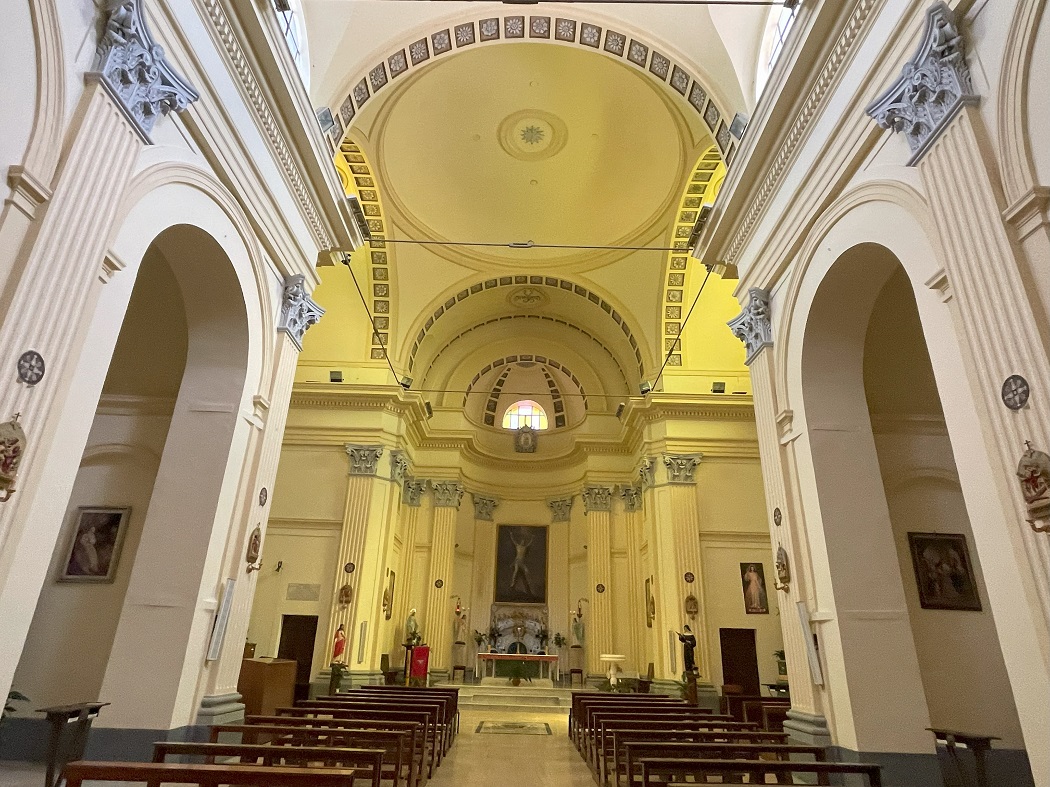The main square of Jenne is dominated by the imposing church of St Andrew Apostol which stands alone like a great monument. The current building dates back to the 19th century when, due to the increase in population and the expansion of the village outside the castle, the arrangement of the new church became necessary.
The expansion was designed in 1835 by the architect Nicola Jona from nearby Trevi nel Lazio and the works were completed in 1874. It is one of the largest religious buildings in the Aniene Valley and the church was inaugurated by the then abbot of Subiaco.
The plaster facade is somewhat austere, ends with a tympanum and is enriched only by an entrance door and four white marble pilasters. On the sides of the facade there are two bell towers that house the bells and, on the one on the left, the village clock has been placed. The construction of the bell towers followed the arrangement of the church and dates back to 1907, in fact we recognize the different style from the facade but also from the texture of the side walls, always made of stone but with a different rock and shape.
The interior appears in neoclassical style and the church has a Latin cross plan with a single nave to which side chapels are added. The two sides of the cross are dedicated to St Andrew Apostol, where you can admire a large canvas by the Sicilian painter cav. Natale Carta, and the other to Saint Roch, the protector of Jenne. In addition to a large canvas painted by Alessandro Zamboni in 1863, you can admire the wooden statue that is carried in procession on August 16th.
Among the valuable works, a large wooden crucifix from the 1600s located at the main altar, while a marble decoration with a plaque commemorating Pope Alexander IV, who was born in Jenne, was placed on the floor.
Above the entrance to the church is the choir loft, built with some columns from Trajan's villa in the Altipiani di Arcinazzo, which houses a modern organ from 1974.









Follow us